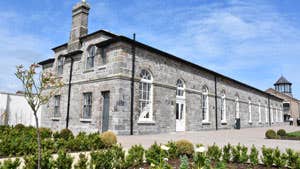A visit to this award-winning and beautifully restored venue will engage visitors with history in a unique way. The exhibitions commemorate and celebrate both the people and place over a time span of 200 years. Richmond Barracks was built in 1814 to counter a Napoleonic invasion and later served as a recruitment barracks for the British Army. Soldiers based here were sent to fight in the Crimean War, the Boer War and World War I.
These buildings were a key site for many significant events in Ireland’s national history, particularly in the immediate aftermath of the 1916 Rising. Over 3,000 people were held here while they awaited their fate of deportation to various prison camps throughout Britain - or worse. The leaders of the Rising were held in the historic Gymnasium prior to being court-martialed and executed at Kilmainham Gaol nearby. A guided tour includes a visit to nearby Goldenbridge Cemetery, an atmospheric Garden Cemetery founded by Daniel O’Connell in 1829. .
Richmond Barracks particularly highlights the role of women in the 1916 uprising. A highlight is a display where descendants of these women crafted a memorial square for each. Their contributions and stories are preserved and celebrated here.
A room on site is restored to show you what school was like at St. Michael's Christian Brothers School in the "olden days" in the mid 20th century and will bring back memories. A collection of old class photos and the school register may be of interest in family history research.
The Mess café run by The Green Kitchen serves delicious hearty and homemade breakfast and lunches for visitors to enjoy. Richmond Barracks is also available for Venue Hire for a range of public and private events. "Mondays at the Mess" is the monthly series of talks hosted by guest lecturers on a range of local history topics. Taking place on the first Monday of every month, each lecture is followed by a cup of tea and the opportunity for a chat. (Podcasts of previous lectures are on the website.)
Visitors can relax in the beautiful and extensive garden to the rear of the buildings.
Visitors are strongly advised to book tours in advance via the website or phone-line.
Wheelchair accessible.

